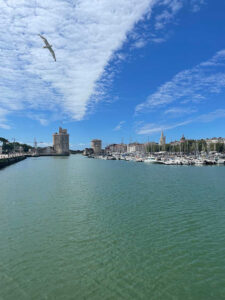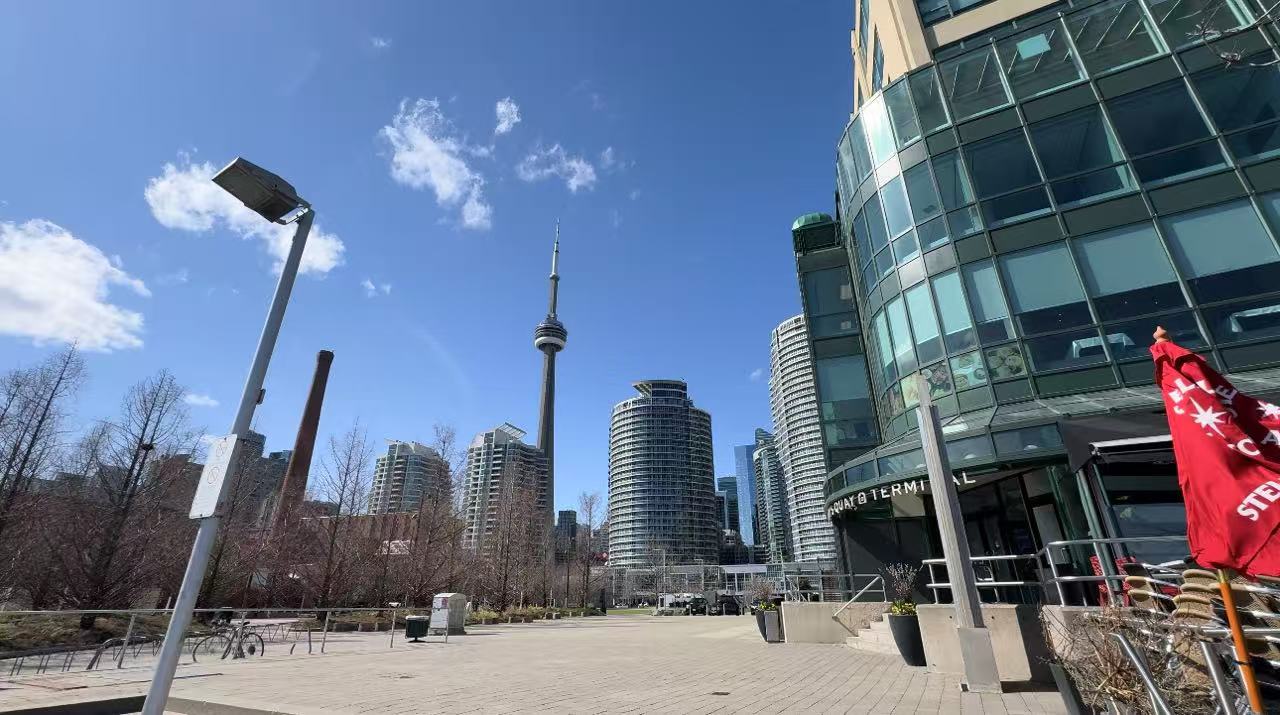Cruise Tourism beyond Sightseeing: From Ha Long Bay to the World – A chance to Connect and Interact
Table of Contents
Introduction
Hello! My name is Autumn, and I’m currently a 3rd-year student at Nagoya University, interning at 4thWAVE. My home country is Vietnam, a country located in the Southeast Asian region, renowned for its cuisine and the hospitality of its people. Moreover, one thing that I adore greatly about Vietnam is its picturesque scenery in the bay areas. Vietnam’s beaches have yet to be explored fully. Therefore, I would like to introduce you to one of the already famous cruise areas – Ha Long Bay, based on my experience from a day cruise, and from there share my perspective on the future of cruise travelling in Vietnam. It’s important to note that any type of exploration requires consideration for the environment and keeping the SDGs in mind. This report is mainly to promote the cruise business’s potential in Vietnam and to encourage better implementation.
My Experience
We often think of cruising as something reserved for the gleaming ports of Europe or the grand coasts of the Middle East, floating cities that promise indulgence, leisure, and a tightly curated luxury experience. But what if cruising could be more than that? What if, instead of just comfort and convenience, a cruise can bring you a great cultural immersive experience, a journey not only across the sea, but into the lives, traditions, and rhythms of a place? That was the question I asked myself when I decided to explore Halong Bay, a UNESCO World Heritage site in Northern Vietnam (Exhibit 1). As a Vietnamese student studying abroad in Japan, I was curious to see how a cruise experience in my home country might offer something different – something more personal, more human.
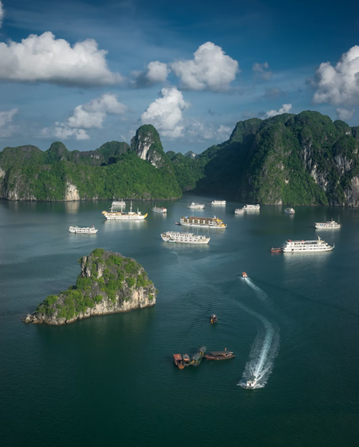
Not long ago, I took a one-day cruise trip through the serene waters of Lan Ha Bay – part of Halong Bay, a famous cruising destination for its dramatic limestone cliffs, picturesque ocean view (Exhibit 2), and, more significantly, the historical, timeless fishing villages. The experience was visually stunning and packed with well-planned activities: kayaking through quiet coves (Exhibit 3), participating in daring watersports activities, lunch onboard with fresh seafood, and a brief stop at a local fishing village. Everything moved smoothly and efficiently. I was beyond grateful for the experience, and I never thought Ha Long Bay could be so beautiful and authentic (Exhibit 4). It became clear to me how this place attracts so many tourists from other countries and can create great impressions on the potential of Vietnam’s beaches and bays.

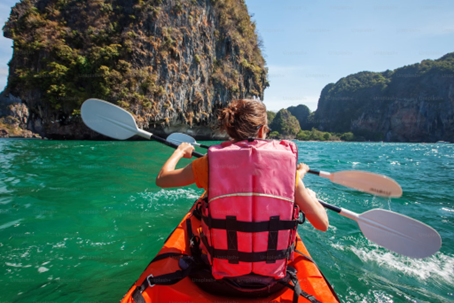
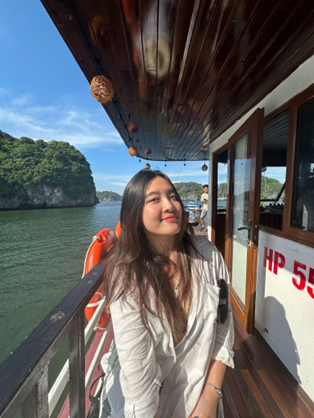
A tourist from China shared: “I’ve visited Ha Long City many times for work, but this is my first time taking a boat out into the bay. I’ve always known Ha Long is a heritage site, but immersing myself in this space, getting up close to the limestone mountains with their fascinating shapes, and experiencing the vastness of the water and waves is truly a unique feeling.” (Thu, Loan, Nam; Nhandan.vn, 2024)
Though thoroughly satisfied, the final activity – the brief glimpse at the local fishing village – left me desiring beyond (Exhibit 4). It was a lingering sense of curiosity.
How so?
During our short visit to the village, we were guided along a set path, encouraged to take photos, and then quickly ushered back to the boat. While I appreciated the glimpse into local life, I couldn’t help but wonder what stories we had missed — what conversations, customs, or connections we could have experienced if we had just a little more time, or a little more freedom to engage. Though cruise tourism is usually mistaken as a fully luxurious experience, and snarkier comments would be “out-of-touch” tourism – meaning that people who engage in these activities don’t get to know the true essence of the place they visit. Indeed, the majority of cruises haven’t been able to offer the full immersive experience, one footage of the youtube channel Haru Daily from Japan showcased her great experience in Ha Long Bay, but all seem to just involve sightseeing, and maybe too short of a cruise to get to know anything just beyond the scene.
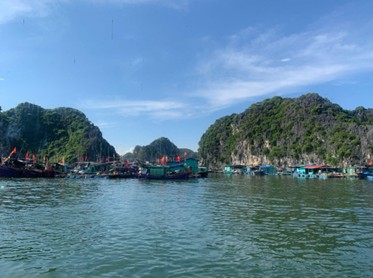
In reality, cruise tourism has the full potential to bring you towards such essence with great depth. I believed this was my own experience with the cruise that I have chosen, so I am hopeful that more and more cruises would understand the importance of connecting with the people who live the view on a daily basis. For tourists, these scenic spots that tourists admire so much are a casual environment for them, where they hustle and lead their normal lives.
| Lukas, a tourist from Germany, said: “The tour to the fishing villages gave me greater insight into the lives of the local people. The houses floating on the water and the small fishing boats—all create a vivid picture of life in the fishing village. What impressed me most was the warmth and sincerity of the local residents. They shared their traditional craft and fascinating stories about their lives tied to the sea. It was truly a memorable experience”. (Thu, Loan, Nam; Nhandan.vn, 2024)
That’s why I’m hopeful about the future of cruise tourism in this region. Because the potential is so much greater than just sightseeing – it’s about creating real human connections.
Cruise Tourism – A Means Towards Culture and Heritage Appreciation
Looking ahead, I believe the most successful cruise experiences in Northern Vietnam will be those that slow down and go deeper. Instead of rushing through a checklist of stops, they’ll build more time for connection: longer village stays, smaller group visits, and opportunities for cross-cultural dialogue. The sightseeing is no longer merely wrapped within seeing the natural beauties, but also the people that have lived within it and help sustain it.
I believe these initiatives are already in action; big names such as Ambassador Cruise, Paradise Sail, and Grand Pioneer Cruise have been incorporating fishing village exploration activities, with in-depth research into how to talk to the villagers and see what they do on a normal day (halongbaytours.com). In the near and long future, it will continue to be more prosperous. The successful cruises, that would attract both Vietnamese visitors and foreign tourists, are the ones that dare to reach out, collaborate with local communities to co-create tours, prioritize sustainable practices, and respect the rhythms of daily life. “Various studies have shown that the existence of motivation, i.e., the focus of cultural tourism as a tourist destination, affects the number and types of activities that tourists seek, the level of awareness of cultural attractions, and the preparation of the trip” (Marlina, Sukmawati Wahyuhana 2024). With such cultural and heritage should aim to slowly become a main focus in designing cruise tours in Ha Long Bay, North of Vietnam, and even more ambitiously, all of Vietnam’s seaside services and cruises.
Discover the Hidden Charm of Vung Vieng Fishing Village in Bai Tu Long Bay!
A Hopeful Future
Northern Vietnam is uniquely positioned to lead this new wave of cruise tourism. With its rich history, layered culture, and already well-developed maritime routes, the region has all the right ingredients — now it’s just about reshaping the recipe. I look forward to a future where all cruise passengers return not just with stunning photos of karst cliffs, but with meaningful memories of real encounters – to learn names, voices, and stories that stay with them long after the journey ends.
What I experienced was just a one-day trip — brief yet beautiful. But it left me wondering: what if it had been longer? Imagine how much more immersive, meaningful, and relaxed the journey could be if it stretched into an overnight stay. In fact, many cruise companies in Halong Bay already offer 2-day-1-night or 3-day-2-night packages, which allow more time to explore hidden lagoons, visit lesser-known villages, and engage in deeper cultural exchanges. Currently, longer routes aren’t possible yet due to limits on the navigable area within the bay. But I remain hopeful that this could be just the beginning — that in the future, Halong Bay and broader Northern Vietnam might develop safe, sustainable cruise routes that extend the journey even further. Such expansion wouldn’t just increase comfort; it would deepen cultural understanding and turn cruise tourism into a truly transformative experience.
These experiences are never meant to be brief moments of bliss, but also lessons and cherishable encounters. Through a thoughtful provider in the cruise tourism industry, tourists will surely be able to enjoy the scenery and the people within it.
References:
MINH THU – TUYET LOAN – NHA NAM (2024) Nhandan.VN https://special.nhandan.vn/vinh-ha-long-du-khach-quoc-te-en/index.html
Marlina, E., Sukmawati, A. M., & Wahyuhana, R. T. (2024). The Correlation Between Cultural Tourism Motivation and Tourism Tolerance. Tourism and Hospitality, 5(4), 1236-1259. https://doi.org/10.3390/tourhosp5040069
 ここでしか見られない絶景に感動
ここでしか見られない絶景に感動

